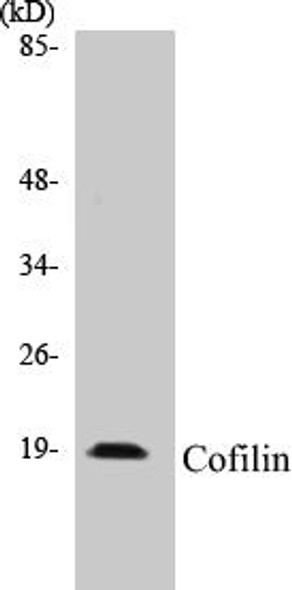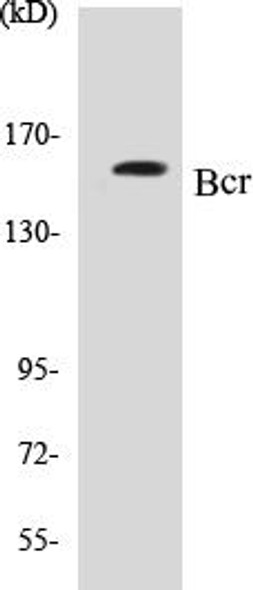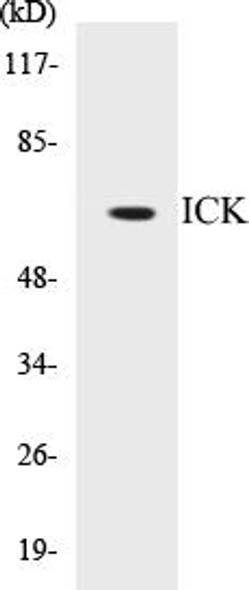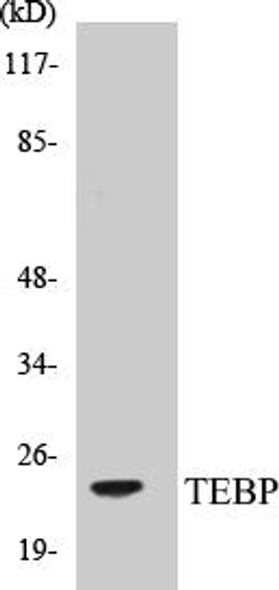OCT3 Colorimetric Cell-Based ELISA Kit
- SKU:
- CBCAB00507
- Product Type:
- ELISA Kit
- ELISA Type:
- Cell Based
- Research Area:
- Epigenetics and Nuclear Signaling
- Reactivity:
- Human
- Mouse
- Rat
- Detection Method:
- Colorimetric
Description
OCT3 Colorimetric Cell-Based ELISA Kit
The OCT3 Colorimetric Cell-Based ELISA Kit is a cutting-edge tool for the quantitative measurement of OCT3 levels in cell lysates and tissue samples. With its high sensitivity and specificity, this kit provides accurate and reliable results, making it ideal for a variety of research applications.OCT3, also known as organic cation transporter 3, plays a crucial role in the uptake and transport of various endogenous and exogenous substances across cell membranes. Its dysregulation has been linked to various diseases such as cancer, neurological disorders, and drug resistance.
Therefore, the OCT3 Colorimetric Cell-Based ELISA Kit serves as a valuable tool for studying OCT3 function and its implications in disease pathology and drug development.Overall, this kit offers a convenient and efficient method for researchers to explore the role of OCT3 in cellular physiology and disease mechanisms, paving the way for potential therapeutic interventions and advancements in the field of pharmacology.
| Product Name: | OCT3 Colorimetric Cell-Based ELISA |
| Product Code: | CBCAB00507 |
| ELISA Type: | Cell-Based |
| Target: | 44472 |
| Reactivity: | Human, Mouse, Rat |
| Dynamic Range: | > 5000 Cells |
| Detection Method: | Colorimetric 450 nmStorage/Stability:4°C/6 Months |
| Format: | 96-Well Microplate |
The OCT3 Colorimetric Cell-Based ELISA Kit is a convenient, lysate-free, high throughput and sensitive assay kit that can detect Oct3 protein expression profile in cells. The kit can be used for measuring the relative amounts of Oct3 in cultured cells as well as screening for the effects that various treatments, inhibitors (ie siRNA or chemicals), or activators have on Oct3.
Qualitative determination of OCT3 concentration is achieved by an indirect ELISA format. In essence, OCT3 is captured by OCT3-specific primary antibodies while the HRP-conjugated secondary antibodies bind the Fc region of the primary antibody. Through this binding, the HRP enzyme conjugated to the secondary antibody can catalyze a colorimetric reaction upon substrate addition. Due to the qualitative nature of the Cell-Based ELISA, multiple normalization methods are needed:
| 1. | A monoclonal antibody specific for human GAPDH is included to serve as an internal positive control in normalizing the target absorbance values. |
| 2. | Following the colorimetric measurement of HRP activity via substrate addition, the Crystal Violet whole-cell staining method may be used to determine cell density. After staining, the results can be analysed by normalizing the absorbance values to cell amounts, by which the plating difference can be adjusted. |
| Database Information: | Gene ID: 5460, UniProt ID: Q01860, OMIM: 164177, Unigene: Hs.249184/Hs.632482/Hs.646545 |
| Gene Symbol: | POU5F1 |
| Sub Type: | None |
| UniProt Protein Function: | Oct4: Transcription factor that binds to the octamer motif (5'-ATTTGCAT-3'). Forms a trimeric complex with SOX2 on DNA and controls the expression of a number of genes involved in embryonic development such as YES1, FGF4, UTF1 and ZFP206. Critical for early embryogenesis and for embryonic stem cell pluripotency. Interacts with UBE2I and ZSCAN10. Interacts with PKM2. Interacts with WWP2. Transcriptional activity is positively regulated by PKM2. Expressed in developing brain. Highest levels found in specific cell layers of the cortex, the olfactory bulb, the hippocampus and the cerebellum. Low levels of expression in adult tissues. Belongs to the POU transcription factor family. Class- 5 subfamily. 2 isoforms of the human protein are produced by alternative splicing. |
| UniProt Protein Details: | Protein type:DNA-binding; Transcription factor Chromosomal Location of Human Ortholog: 6p21.31 Cellular Component: nucleoplasm; transcription factor complex; cytoplasm; cytosol; nucleus Molecular Function:protein binding; miRNA binding; DNA binding; sequence-specific DNA binding; ubiquitin protein ligase binding; transcription factor binding; transcription factor activity Biological Process: transcription from RNA polymerase II promoter; blastocyst development; anatomical structure morphogenesis; regulation of asymmetric cell division; regulation of transcription, DNA-dependent; regulation of gene expression; somatic stem cell maintenance; endodermal cell fate specification; response to wounding; positive regulation of transcription from RNA polymerase II promoter; mRNA transcription from RNA polymerase II promoter |
| NCBI Summary: | This gene encodes a transcription factor containing a POU homeodomain that plays a key role in embryonic development and stem cell pluripotency. Aberrant expression of this gene in adult tissues is associated with tumorigenesis. This gene can participate in a translocation with the Ewing's sarcoma gene on chromosome 21, which also leads to tumor formation. Alternative splicing, as well as usage of alternative AUG and non-AUG translation initiation codons, results in multiple isoforms. One of the AUG start codons is polymorphic in human populations. Related pseudogenes have been identified on chromosomes 1, 3, 8, 10, and 12. [provided by RefSeq, Oct 2013] |
| UniProt Code: | Q01860 |
| NCBI GenInfo Identifier: | 42560248 |
| NCBI Gene ID: | 5460 |
| NCBI Accession: | NP_002692 |
| UniProt Secondary Accession: | Q01860,P31359, Q15167, Q15168, Q16422, Q5STF3, Q5STF4 A6NCS1, A6NLL8, D2IYK4, |
| UniProt Related Accession: | Q01860 |
| Molecular Weight: | 30,085 Da |
| NCBI Full Name: | POU domain, class 5, transcription factor 1 isoform 1 |
| NCBI Synonym Full Names: | POU class 5 homeobox 1 |
| NCBI Official Symbol: | POU5F1 |
| NCBI Official Synonym Symbols: | OCT3; OCT4; OTF3; OTF4; OTF-3; Oct-3; Oct-4 |
| NCBI Protein Information: | POU domain, class 5, transcription factor 1; octamer-binding protein 3; octamer-binding protein 4; POU domain transcription factor OCT4; octamer-binding transcription factor 3; POU-type homeodomain-containing DNA-binding protein |
| UniProt Protein Name: | POU domain, class 5, transcription factor 1 |
| UniProt Synonym Protein Names: | Octamer-binding protein 3; Oct-3; Octamer-binding protein 4; Oct-4; Octamer-binding transcription factor 3 |
| UniProt Gene Name: | POU5F1 |
| UniProt Entry Name: | PO5F1_HUMAN |
| Component | Quantity |
| 96-Well Cell Culture Clear-Bottom Microplate | 2 plates |
| 10X TBS | 24 mL |
| Quenching Buffer | 24 mL |
| Blocking Buffer | 50 mL |
| 15X Wash Buffer | 50 mL |
| Primary Antibody Diluent | 12 mL |
| 100x Anti-Phospho Target Antibody | 60 µL |
| 100x Anti-Target Antibody | 60 µL |
| Anti-GAPDH Antibody | 60 µL |
| HRP-Conjugated Anti-Rabbit IgG Antibody | 12 mL |
| HRP-Conjugated Anti-Mouse IgG Antibody | 12 mL |
| SDS Solution | 12 mL |
| Stop Solution | 24 mL |
| Ready-to-Use Substrate | 12 mL |
| Crystal Violet Solution | 12 mL |
| Adhesive Plate Seals | 2 seals |
The following materials and/or equipment are NOT provided in this kit but are necessary to successfully conduct the experiment:
- Microplate reader able to measure absorbance at 450 nm and/or 595 nm for Crystal Violet Cell Staining (Optional)
- Micropipettes with capability of measuring volumes ranging from 1 µL to 1 ml
- 37% formaldehyde (Sigma Cat# F-8775) or formaldehyde from other sources
- Squirt bottle, manifold dispenser, multichannel pipette reservoir or automated microplate washer
- Graph paper or computer software capable of generating or displaying logarithmic functions
- Absorbent papers or vacuum aspirator
- Test tubes or microfuge tubes capable of storing ≥1 ml
- Poly-L-Lysine (Sigma Cat# P4832 for suspension cells)
- Orbital shaker (optional)
- Deionized or sterile water
*Note: Protocols are specific to each batch/lot. For the correct instructions please follow the protocol included in your kit.
| Step | Procedure |
| 1. | Seed 200 µL of 20,000 adherent cells in culture medium in each well of a 96-well plate. The plates included in the kit are sterile and treated for cell culture. For suspension cells and loosely attached cells, coat the plates with 100 µL of 10 µg/ml Poly-L-Lysine (not included) to each well of a 96-well plate for 30 minutes at 37°C prior to adding cells. |
| 2. | Incubate the cells for overnight at 37°C, 5% CO2. |
| 3. | Treat the cells as desired. |
| 4. | Remove the cell culture medium and rinse with 200 µL of 1x TBS, twice. |
| 5. | Fix the cells by incubating with 100 µL of Fixing Solution for 20 minutes at room temperature. The 4% formaldehyde is used for adherent cells and 8% formaldehyde is used for suspension cells and loosely attached cells. |
| 6. | Remove the Fixing Solution and wash the plate 3 times with 200 µL 1x Wash Buffer for five minutes each time with gentle shaking on the orbital shaker. The plate can be stored at 4°C for a week. |
| 7. | Add 100 µL of Quenching Buffer and incubate for 20 minutes at room temperature. |
| 8. | Wash the plate 3 times with 1x Wash Buffer for 5 minutes each time. |
| 9. | Add 200 µL of Blocking Buffer and incubate for 1 hour at room temperature. |
| 10. | Wash 3 times with 200 µL of 1x Wash Buffer for 5 minutes each time. |
| 11. | Add 50 µL of 1x primary antibodies (Anti-OCT3 Antibody and/or Anti-GAPDH Antibody) to the corresponding wells, cover with Parafilm and incubate for 16 hours (overnight) at 4°C. If the target expression is known to be high, incubate for 2 hours at room temperature. |
| 12. | Wash 3 times with 200 µL of 1x Wash Buffer for 5 minutes each time. |
| 13. | Add 50 µL of 1x secondary antibodies (HRP-Conjugated AntiRabbit IgG Antibody or HRP-Conjugated Anti-Mouse IgG Antibody) to corresponding wells and incubate for 1.5 hours at room temperature. |
| 14. | Wash 3 times with 200 µL of 1x Wash Buffer for 5 minutes each time. |
| 15. | Add 50 µL of Ready-to-Use Substrate to each well and incubate for 30 minutes at room temperature in the dark. |
| 16. | Add 50 µL of Stop Solution to each well and read OD at 450 nm immediately using the microplate reader. |
(Additional Crystal Violet staining may be performed if desired – details of this may be found in the kit technical manual.)










